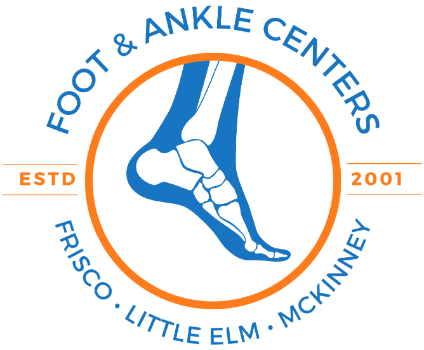Understanding Foot And Ankle Wounds at Foot & Ankle Centers
Jul 23, 2025 | By: Foot & Ankle Centers of Frisco, Little Elm, McKinney
Did you know that foot and ankle wounds—like diabetic foot ulcers, pressure sores, and even minor cuts—can lead to serious complications if left untreated? Early intervention is key to preventing infections and long-term damage. At Foot & Ankle Centers, Dr. Knapp, Dr. Tavakoli, and Dr. Treleven provide expert treatment across their Frisco, Little Elm, and McKinney locations. Read on to equip yourself with the knowledge you need to protect your feet and ankles!
1. Types of Foot and Ankle Wounds
Foot and ankle wounds are categorized into various types based on their severity, cause, and affected area. Recognizing the type of wound is essential for effective treatment. Let's delve into the most common types:
1.1 Cuts and Abrasions
Cuts and abrasions are amongst the most common foot injuries. They commonly occur due to accidents, such as:
- Stubbing your toe against a hard surface
- Falling or scraping your foot against rough surfaces
- Walking barefoot in places where there may be sharp objects, like broken glass or stones
These types of wounds can usually be treated at home with basic first-aid care. The team at Foot & Ankle Centers suggests to clean the wound, apply antibiotic ointment, and cover it with a sterile bandage to help prevent infection and promote healing.
1.2 Diabetic Foot Ulcers
For individuals with diabetes, foot ulcers are a serious concern. Reduced blood flow combined with neuropathy can lead to the formation of ulcers on the feet. Some key points include:
- Signs and Symptoms: Ulcers may appear as open sores that tend to develop on weight-bearing areas of the foot. Symptoms may include pain, swelling, redness, and delayed healing.
- Risk Factors: Poor circulation, high blood sugar levels, and previous foot injuries increase the risk of developing diabetic ulcers.
- Treatment: Prompt medical intervention is necessary. Treatment may involve wound care, controlling blood sugar, and in some cases, surgical intervention. Regular check-ups with a healthcare provider or specialists at Foot & Ankle Centers are crucial for managing foot health in diabetic patients.
1.3 Pressure Sores
Pressure sores, also known as bedsores or decubitus ulcers, result from prolonged pressure on the skin in individuals with limited mobility. This is especially common among:
- Elderly individuals
- Those confined to wheelchairs or beds
- Patients who have limited ability to move due to surgery or illness
To manage pressure sores, it is essential to relieve pressure by changing positions regularly, maintaining good hygiene, and using specialized cushions or mattresses. If a sore develops, seek medical attention at Foot & Ankle Centers as these can quickly worsen if not treated properly.
2. Importance of Early Care
Neglecting foot and ankle wounds, whether minor or severe, can lead to significant health risks. By receiving timely care, you:
- Reduce the risk of infection, which can complicate the healing process and lead to serious complications like sepsis.
- Ensure quicker recovery, which allows you to return to normal activities sooner.
- Save on medical costs that may arise from ongoing treatment for neglected wounds.
2.1 How to Assess Wound Severity
Knowing when to seek care is key. The team at Foot & Ankle Centers recommends watching for these signs that a wound needs medical attention:
- The wound does not stop bleeding within 10 minutes.
- There is severe pain or swelling around the wound.
- Signs of infection, such as warmth, redness, or pus, develop.
- The wound is deep, large, or has jagged edges.
3. Self-Care Tips for Foot and Ankle Wounds
While some wounds may require medical care, many can be effectively managed at home. Here are some valuable self-care tips:
- Keep the Wound Clean: Gently clean the wound with mild soap and water, and avoid scrubbing fiercely, which may worsen the injury.
- Apply an Antiseptic: Use a topical antiseptic to reduce the risk of infection. Help the wound heal by applying a thin layer of antibiotic ointment.
- Cover the Wound: Protecting the wound with a sterile bandage not only keeps dirt and germs out but also helps to keep the area moist, which can facilitate the healing process.
- Monitor for Changes: Keep an eye on the wound for any signs of worsening conditions such as increased redness, swelling, or pus. Seek medical advice if any of these symptoms develop.
4. When to Book an Appointment
If you have a foot or ankle wound that you believe could become problematic, it is crucial to book an appointment with a healthcare provider as soon as possible. Some situations warrant immediate attention:
- If you have diabetes and notice any new sore.
- If the wound has not healed after two weeks.
- If you experience increased pain that cannot be managed with over-the-counter medications.
Understanding foot and ankle wounds empowers you to take control of your health, prevent complications, and stay active.
What Can You Do at Home?
Protect your mobility by taking simple steps at home: check your feet regularly—especially if you're high-risk—practice good hygiene, and wear properly fitting shoes to prevent cuts, blisters, and injuries. Healthy habits now help prevent future problems and keep you active.
So Now What?
Understanding foot and ankle wounds is key to protecting your health. At Foot & Ankle Centers in Frisco, Little Elm, and McKinney, Dr. Knapp, Dr. Tavakoli, and Dr. Treleven offer expert care to help prevent complications and promote healing. Don’t wait—your feet deserve the attention of specialists who truly understand them.


Leave a comment
0 Comments